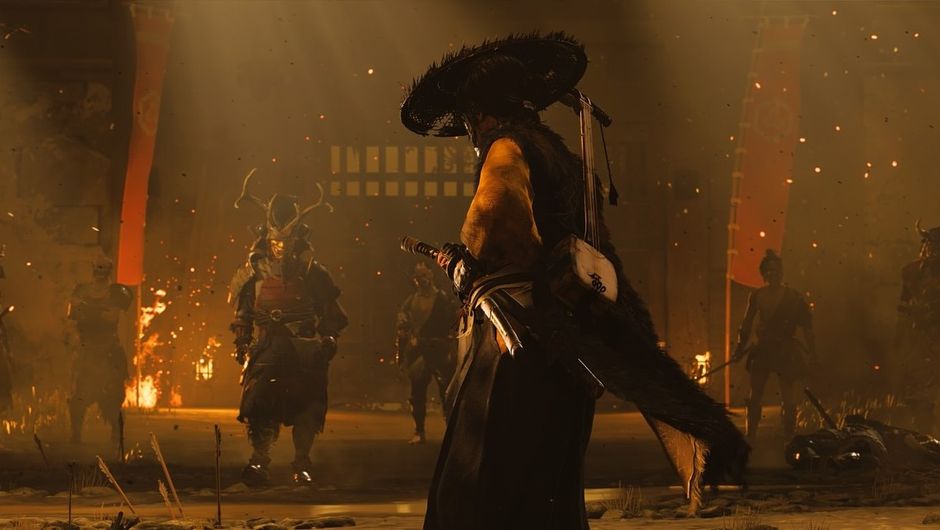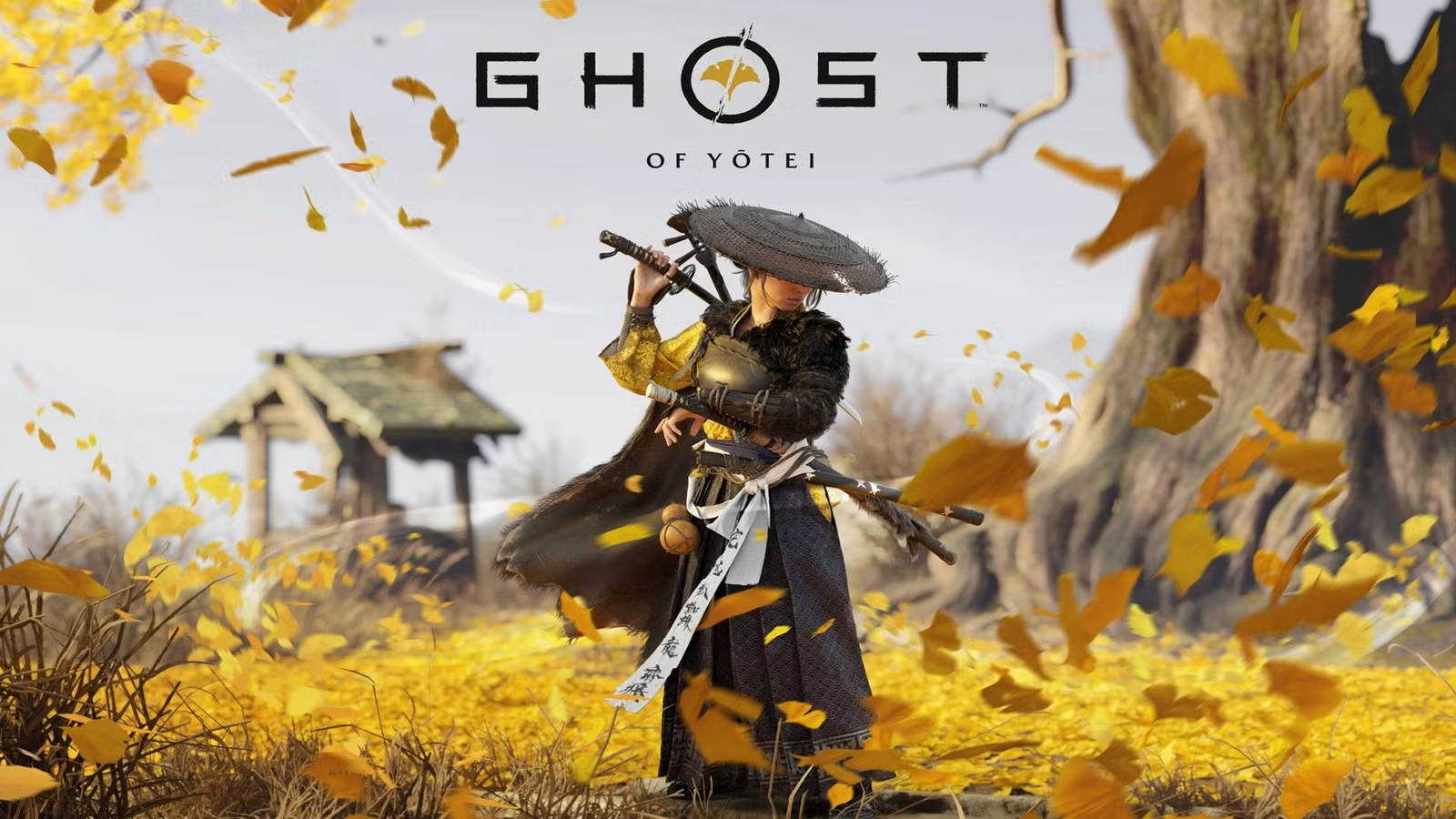Ghost of Yōtei, developed by Sucker Punch Productions and published by Sony Interactive Entertainment, launched exclusively on PlayStation 5 on October 2, 2025, marking a compelling spiritual successor to the acclaimed Ghost of Tsushima. Set approximately 300 years later in the untamed northern reaches of Japan specifically the snowy expanses of Ezo (modern-day Hokkaido) this action-adventure title transports players to a breathtaking winter landscape, where volcanic mists and aurora-lit skies replace the sun-drenched islands of its predecessor.
At its core, the game follows Atsu, a resilient ronin driven by vengeance against a enigmatic cult, blending fluid swordplay, stealth mechanics, and expansive open-world exploration. Players will traverse dynamic terrains teeming with haikus, thermal springs, and mythical yokai encounters, all rendered in stunning detail that emphasizes environmental storytelling. Critics have praised its refinements: IGN highlights the "gorgeous landscapes and satisfying, fluid action combat," while GameSpot notes it "builds and improves upon its predecessor with a gripping story, rewarding exploration, and fantastic combat." Polygon calls it a "reliable sequel about life beyond violence," evoking the grandeur of classic Hollywood epics. Though some players find the narrative occasionally predictable, its immersive world and polished mechanics make it essential for fans of narrative-driven adventures. Whether revisiting feudal Japan's echoes or discovering them anew, Ghost of Yōtei delivers a haunting, poetic journey worth every snow-swept hour.Setting & Story
The story is set in Japan’s northern island of Ezo (modern-day Hokkaidō), around the environs of Mount Yōtei in the year 1603. You play as Atsu, a wandering mercenary (an onna-mushā) who, sixteen years after witnessing the massacre of her family, takes on the guise of a vengeful spirit (“onryō”) to hunt down the gang known as the Yōtei Six. Six ruthless outlaws responsible for her tragedy. Her journey is not just about revenge, but also about returning to her homeland, forging alliances, and dealing with loss and purpose.
Gameplay & Mechanics
Ghost of Yōtei masterfully refines the open-world samurai formula established in Ghost of Tsushima, weaving in innovative twists that keep the experience fresh while honoring its roots. At its heart, this action-adventure title emphasizes fluid exploration and deliberate combat, all set against the stark, evocative beauty of 1603 Hokkaido. Players embody Atsu, a vengeful ronin, in a world that feels both intimately crafted and vast, encouraging you to lose hours wandering rather than rushing through checklists.

Exploration: A Winter Wonderland of Discovery Traversal shines here, with Atsu gliding across snow-dusted ridges, vibrant flower meadows, and dense, frost-kissed forests encircling the imposing Mount Yōtei. The PS5's SSD enables seamless fast travel and near-instant loading, letting you chain discoveries like stumbling upon hidden onsen hot springs for restorative soaks or composing haikus amid aurora displays without breaking immersion. Side activities abound: bounty hunts for elusive ronin, shamisen performances that unlock lore, and even sumi-e ink painting mini-games that reward environmental observation. It's a meditative roam, where the landscape itself tells stories of isolation and resilience, though some reviewers note the map's icon overload can occasionally dilute the sense of wonder.
Combat: Versatile Blades, Strategic Depth Combat evolves beyond the one-sword wonder, introducing a arsenal of period-authentic weapons: the thrusting yari spear for crowd control, the whipping kusarigama chain-sickle for disarms, the hefty odachi greatsword for armored foes, dual katanas for blistering speed, plus bows and early matchlock rifles for ranged takedowns. A standout "weapon counter" mechanic shines Atsu's toolkit adapts to enemy types, like using the kusarigama to yank shields or the odachi to shatter formations adding layers of tactical choice without overwhelming newcomers. Parries feel weighty and rewarding, amplified by yokai-inspired supernatural flourishes, such as ethereal dodges that leave ghostly afterimages. It's "gorgeously, bloodily meditative," per Screen Rant, though Eurogamer critiques occasional predictability in boss patterns. Stealth remains a viable path, with aggressive ghost tactics blending into brutal standoffs.
Non-Linear Progression: Forge Your Path The narrative unfolds non-linearly around confronting the Yōtei Six a cabal of cultist warlords with flexibility to tackle them in any order (save a few story locks), tailoring difficulty to your build. Progression ties into a robust skill tree unlocked via weapon mastery quests and side missions, letting you specialize as a shadowy assassin or frontline berserker. This freedom fosters replayability, as player choices ripple through alliances and endings.
PS5 Features: Hardware Harmony Sucker Punch leans hard into DualSense magic: adaptive triggers tense with each katana clash, haptic feedback rumbles through snowy gales or volcanic tremors, and 3D audio spatializes enemy footsteps for heart-pounding ambushes. At 60fps with ray-traced shadows, it's a technical showcase that makes every parry and panorama pop though performance dips in dense foliage, as noted in Digital Foundry's breakdown.
Overall, Yōtei's mechanics deliver a polished, empowering loop that's accessible yet deep, earning praise for its "stunning combat amid familiar shadows." It's not revolutionary, but in a genre often bogged by bloat, its elegant execution makes every swing and stride feel purposeful.
Themes & Atmosphere

While Ghost of Yōtei's mechanics deliver pulse-pounding precision, it's the pervasive mood the interplay of stark beauty and simmering tension that elevates it beyond mere escapism. Set in the unforgiving wilds of 1603 Ezo, the game weaves a tapestry of introspection and intensity, where every gust of wind or flicker of aurora light underscores themes of personal reckoning and cultural reverence. Sucker Punch crafts an atmosphere that's as introspective as it is immersive, turning the player's journey into a meditative elegy for lost souls and untamed lands. As Polygon aptly puts it, this is "a reliable sequel about life beyond violence," blending raw emotion with poetic restraint to create moments that resonate long after the controller's set down.
Revenge and Identity: A Ghost's Haunting Reckoning At the narrative's core pulses Atsu's quest for vengeance, a ronin forged in the fires of trauma who embodies the "ghost" moniker not just as a stealth archetype, but as a fractured identity adrift in a world that demands reinvention. Her past a village razed by the Yōtei Six's cultist zeal fuels a revenge arc that's less about triumphant catharsis and more about the quiet erosion of self. Flashbacks and journal entries peel back layers of her psyche, revealing a woman grappling with survivor's guilt and the seductive pull of isolation. This emotional weight grounds the spectacle; duels aren't just flashy set pieces but mirrors to her unraveling resolve, culminating in choices that teeter between redemption and ruin.
Critics hail this nuance as a leap forward. The Guardian describes it as a "deliciously brutal... thirst for bloody vengeance" that humanizes its young protagonist, avoiding clichés by intertwining her arc with themes of forgiveness and fragile alliances. Screen Rant echoes the sentiment, praising a "more compelling narrative" that fulfills the wandering samurai's inner turmoil, making Atsu's path feel intimately personal rather than archetypal. It's a theme that invites empathy, reminding players that true ghosts are the ones we carry within.
Nature and Place: Whispers of the Wild North The game's soul resides in its setting, a love letter to Hokkaido's primal majesty where Mount Yōtei looms as both sentinel and symbol of impermanence. Sucker Punch lavishes detail on the environment the whisper of wind through swaying pampas grass, the relentless drift of snow blanketing ancient cedars, sudden blizzards that blur friend from foe, and shafts of golden light piercing volcanic haze. These elements aren't backdrop; they're active participants, shaping encounters and evoking a profound sense of place that fosters "spontaneity... the stories you tell your friends," as one reviewer evocatively notes.
This reverence for nature amplifies the isolation, turning exploration into a dialogue with the land's indifference. Hot springs offer respite amid geothermal glows, while aurora veils transform night skies into canvases of fleeting wonder. Atmos Magazine frames it as an "homage and elegy to nature," capturing how the world's dynamism mirrors Atsu's turbulent spirit. Mashable concurs, lauding the "gorgeous open worlds" that immerse players in a living, breathing ecosystem where every vista invites pause. It's this atmospheric fidelity that makes Yōtei feel alive, a stark contrast to Tsushima's sunlit lyricism.
Samurai Ethos & Myth: Honor Wreathed in the Supernatural Echoing the bushido code of its predecessor, Ghost of Yōtei probes the samurai ethos honor, duty, the blade as extension of will but infuses it with folkloric shadows that blur the line between history and haunt. Wolf companions prowl as spectral guides, drawing from Ainu lore, while onryō (vengeful spirits) manifest in ethereal boss fights, their wails echoing unresolved grudges. These mythic touches enrich the genre's stoicism, transforming rigid honor into a fluid dance with the uncanny, where Atsu's "ghost" powers evoke yokai trickery over stoic resolve.
Gamer Matters appreciates how this "shakes up the... typical revenge story," layering nuance through supernatural metaphors for inner demons. ESPN calls it a "hauntingly beautiful revenge tale" that captures a unique atmosphere, blending cinematic grandeur with subtle folklore to honor samurai cinema's evolution. The result? A thematic depth that rewards contemplation, proving Sucker Punch's mastery in marrying myth to mortality.
In essence, Yōtei's themes and atmosphere forge an unforgettable synergy, where revenge tempers identity, nature cradles myth, and every snowflake carries the weight of worlds unspoken. It's a game that doesn't just play it lingers, like frost on the soul.

Critical Reception & Highlights
Reviews have been broadly positive. For example, GamesRadar remarked that Ghost of Yōtei is “one of the first PS5 games to feel truly boundary-pushing… a hyper violent samurai revenge quest that hooked me.” Highlights include the richly crafted world, satisfying combat depth, and the protagonist’s compelling character arc. Some criticisms: side-quests and open-world mechanics sometimes feel formulaic or overly guided rather than fully free.
Why It Matters
New protagonist from the same universe: Instead of continuing the exact story of Tsushima, this game takes the franchise’s spirit to a new region and era, offering fresh perspectives.
Technical showcase: Built for PS5 from the ground up, the game shows what a next-gen exclusive can look and feel like.
Cultural & environmental immersion: The game’s setting in northern Japan (Ezo/Hokkaidō) is less common in games, offering new aesthetics and storytelling possibilities.
Weapon and combat evolution: The multi-weapon system, disarming moves, enemy archetype counters deepen the loop significantly compared to many action games.
In Summary
If you’re a fan of open-world samurai games, cinematic action, and rich world-building, Ghost of Yōtei is shaping up to be a major title. It blends satisfying combat, emotional storytelling, and a gorgeous setting into a compelling package. It also retains what made Ghost of Tsushima beloved while pushing into new territory.
Would you like me to pull together a full game-payload (platforms, system requirements, characters, screenshots, etc.) for Ghost of Yōtei, similar to the structure you’ve used for your other game entries?
